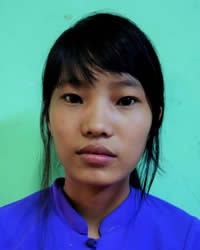Naga, Para in Myanmar (Burma)

Photo Source:
Copyrighted © 2026
Kerry Olson All rights reserved. Used with permission |
Send Joshua Project a map of this people group.
|
| People Name: | Naga, Para |
| Country: | Myanmar (Burma) |
| 10/40 Window: | Yes |
| Population: | 1,600 |
| World Population: | 1,600 |
| Primary Language: | Naga, Jejara |
| Primary Religion: | Christianity |
| Christian Adherents: | 65.00 % |
| Evangelicals: | 28.00 % |
| Scripture: | Portions |
| Ministry Resources: | No |
| Jesus Film: | No |
| Audio Recordings: | No |
| People Cluster: | South Asia Tribal - Naga |
| Affinity Bloc: | South Asian Peoples |
| Progress Level: |
|
Introduction / History
The Para Naga are also known as Jejara Naga. Jejara means "the people who love and live a life of peace and tranquility". The term "Para" is derived from the word "Parasar" which means "new village founders", and was used to refer to anyone who wandered around and then came and settled down in Myanmar.
The Naga are one of many Tibeto-Burman groups. They are said to have migrated from Tibet and entered Myanmar through what is now Kachin State. They moved along the Chindwin valleys and scattered throughout Manipur, Assam and even into eastern Bangladesh. From these locations, some Naga later returned to Myanmar. Many Naga also live in Nagaland in Northeast India.
Many Naga people are agriculturalists. They produce their own food and clothing, and sell and trade fruit (oranges) and vegetables. Sometimes, when they can't get to the market, they trade oranges for rice from Chinese merchants.
Where Are they Located?
Historically, the Naga are the peoples who live in the Brahmaputra and Chindwin valleys. Until recent times, all of the groups in this large geographical region called themselves Naga and often claimed that they were one group. Although they occupy a continuous stretch of hill country between the Brahmaputra and Chindwin valleys, these groups are not homogeneous ethnically, culturally, or linguistically.